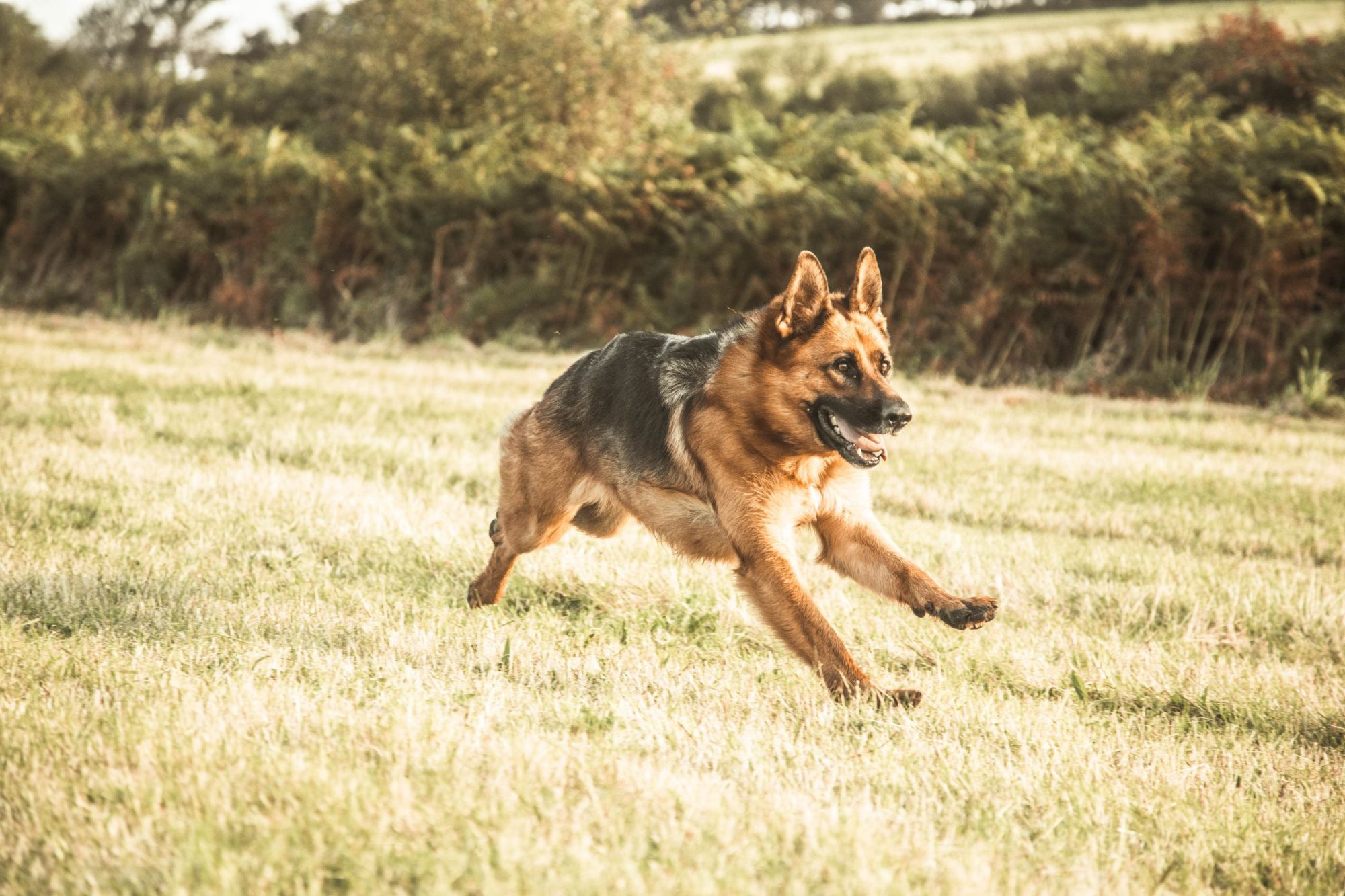What Are the Signs of Hip Dysplasia in Dogs?

If you own a larger dog, you probably know that there’s a possibility your pup will develop the dreaded hip dysplasia. Even though dogs of any size and breed can get hip dysplasia, it’s much more common in larger dogs. So what is hip dysplasia in dogs? Is there anything you can do to prevent it? The team at Ark Animal Hospital is here to help guide you through the ins and outs of this confusing condition.
What is Hip Dysplasia in Dogs?
Hip dysplasia is a skeletal condition that affects a dog’s hip joint. Each hip joint has a ball and socket. In a healthy dog, the ball and socket fit together perfectly, gliding and sliding with your pup’s joyful movements.
With hip dysplasia, the ball and socket are too loose. This causes the ligaments, muscles, and joint-protective capsule to stretch. The ball and socket grind together instead of doing that beautiful gliding motion. Over time, the joint gets more and more damaged, leading to arthritis—and pain for your poor pup.
There are many reasons why a dog might develop hip dysplasia. Genetics, nutrition, weight, excessive exercise, and rapid growth rate can all contribute. You may notice signs of hip dysplasia in puppies as young as three or four months old. But many dogs don’t develop signs of the disease until they’re one or two years old.
Signs of Hip Dysplasia in Dogs
There are many potential signs of hip dysplasia in dogs, but the most common include:
- Limping
- Difficulty jumping, running, or climbing stairs
- Stiffness
- Limited range of motion
- Lowered activity level
- Bunny-hopping, swaying gait when running
- Cracking and popping sounds from the joints
Your dog may also develop noticeably smaller thigh muscles due to lameness and pain in the hind legs. Their shoulder muscles may become much larger as their body tries to make up for the thigh weakness.
Our caring veterinary team will check for signs of hip dysplasia during your dog’s routine wellness appointments. You can also call us if you notice any signs of hip dysplasia in your dog. With our advanced diagnostic services, we can find out if your pup has hip dysplasia and make a plan to treat it.
The pawsome news is that many dogs go on to live long, happy lives with early intervention and treatment.
How is Hip Dysplasia Treated?
Mild cases of hip dysplasia can be managed with supplements, pain medications, and lifestyle changes. Your veterinarian might recommend joint supplements like glucosamine and chondroitin. These can help strengthen and even repair your pup’s joints. Weight loss, low-impact exercise, and balanced nutrition can also help.
A veterinarian might recommend orthopedic surgeries for dogs in more advanced cases. These might include hip replacement for dogs, double or triple pelvic osteotomy, (DPO/TPO), or femoral head osteotomy (FHO).
At Ark Animal Hospital, our highly-skilled veterinarians can perform a range of hip dysplasia surgeries. We are here to help your pup enjoy healthy hips again!
Call us at (215) 822‑3636 to schedule a hip dysplasia assessment or learn more about how we treat this common yet manageable disease.
